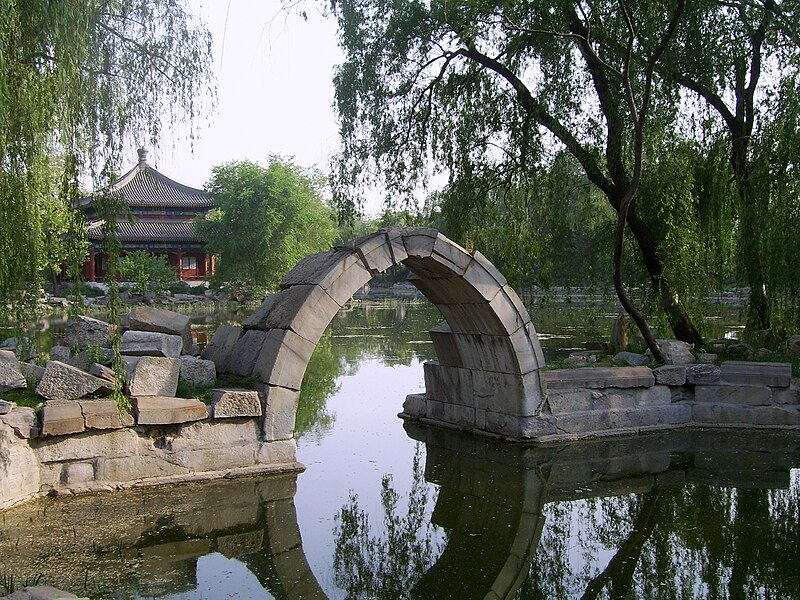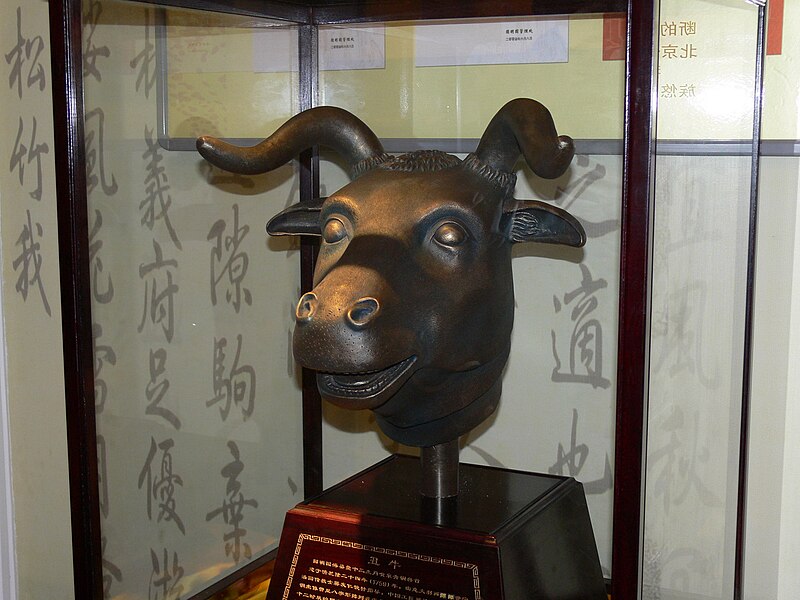In The Confidant,
Cixi (Michelle Yim) has twice referred to the humiliation suffered by the Qing
court over the
Burning of Yuan Ming Yuan (火燒圓明園).
Yuan Ming
Yuan (圓明園), also
known as The Old Summer Palace, was the summer resort for the Qing Emperor and
the royal family. Some Emperors actually made it their primary residence and
conducted official business there. It was built early in the Qing Dynasty by
the Kangxi Emperor and subsequently expanded during the Yongzheng and Qianlong
eras, thus Yuan Ming Yuan is made up of three distinct gardens.
 Inside,
there were palaces, temples, replicas of Western-style architecture, gardens
and vast collections of art. Scenery from other parts of China was recreated with
the landscape. Famously, there was a water clock fountain called 海晏堂. The fountain was surrounded by bronze sculptures of
the 12 animals in the Chinese zodiac. Every two hours, water would sprout from
the mouth of the corresponding animal. At noon each day, water would sprout
from all of the sculptures, creating a wonderful display.
Inside,
there were palaces, temples, replicas of Western-style architecture, gardens
and vast collections of art. Scenery from other parts of China was recreated with
the landscape. Famously, there was a water clock fountain called 海晏堂. The fountain was surrounded by bronze sculptures of
the 12 animals in the Chinese zodiac. Every two hours, water would sprout from
the mouth of the corresponding animal. At noon each day, water would sprout
from all of the sculptures, creating a wonderful display.
During the
Second Opium War, the Qing court arrested and tortured British diplomats that had
been sent for peace negotiations. This greatly angered the British and they,
along with the French, looted Yuan Ming Yuan, stealing many precious artifacts.
When they entered the garden, they also discovered the severed remains of some
of the envoys. Two weeks later, the British commander ordered Yuan Ming Yuan to
be burnt down in retaliation for the Qing court’s actions. Yuan Ming Yuan was
chosen as the target instead of the Forbidden City because it was the private
garden of the Emperor, whereas the Forbidden City represented the political centre
of the country. The British wanted this to be a personal punishment and warning
to the Xianfeng Emperor and not all of the citizens in China.
It took
three full days to burn down the vast property and about 300 servants died in
the fire. Very few of the wooden Chinese structures withstood the fire. Some of
the European structures made of stone survived and still stand today. Most of
the stolen relics have not been returned to China and remain in foreign museums
or private collections. Of the 12 bronze zodiac sculptures, seven have
resurfaced and five have been recovered to China. The rest remain missing.
The Burning
of Yuan Ming Yuan took place during the reign of the Xianfeng Emperor. His successor,
the Tongzhi Emperor (Oscar Leung), had considered restoring parts of the garden, but the
project was ultimately cancelled due to lack of available funds. Later, during
the Boxer Rebellion, Yuan Ming Yuan was completely destroyed by a second fire. Currently, the
grounds, with its few remaining structures, is protected as a historic site
by the Chinese government, but no plans have been made to restore its former
glory.



No comments:
Post a Comment